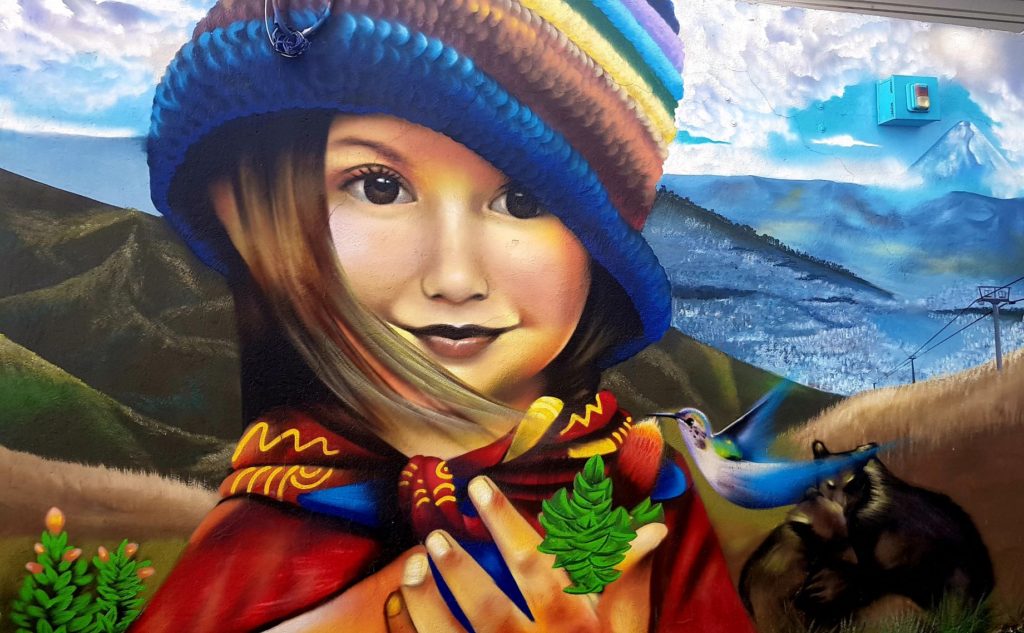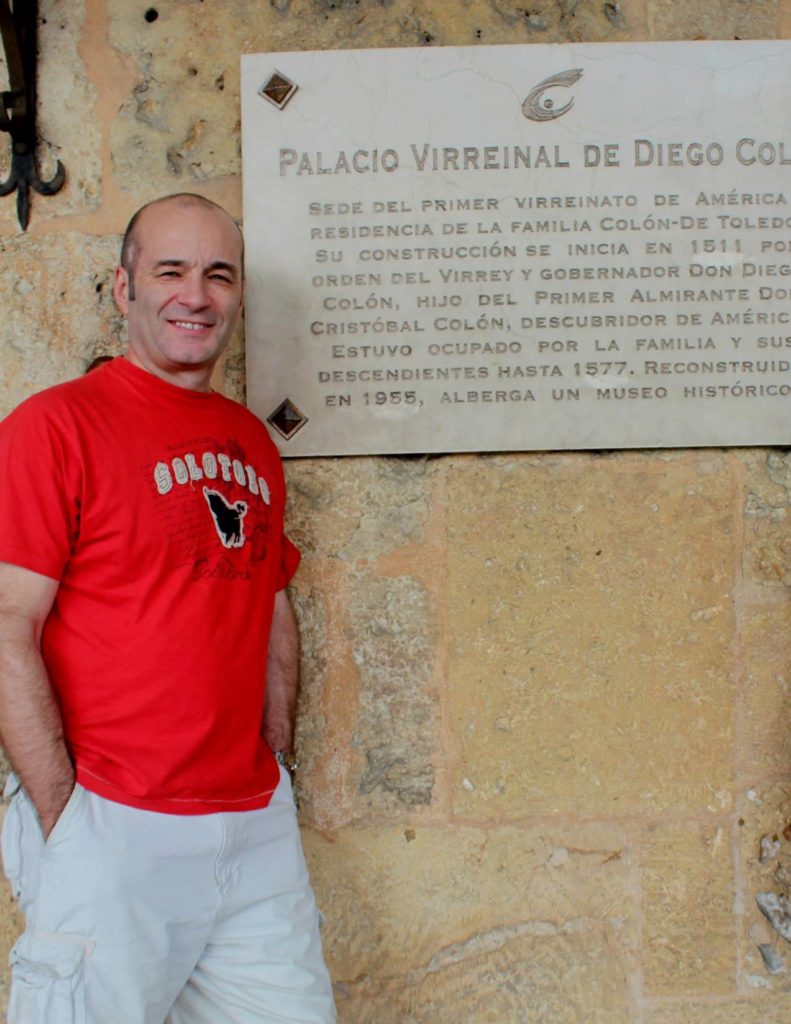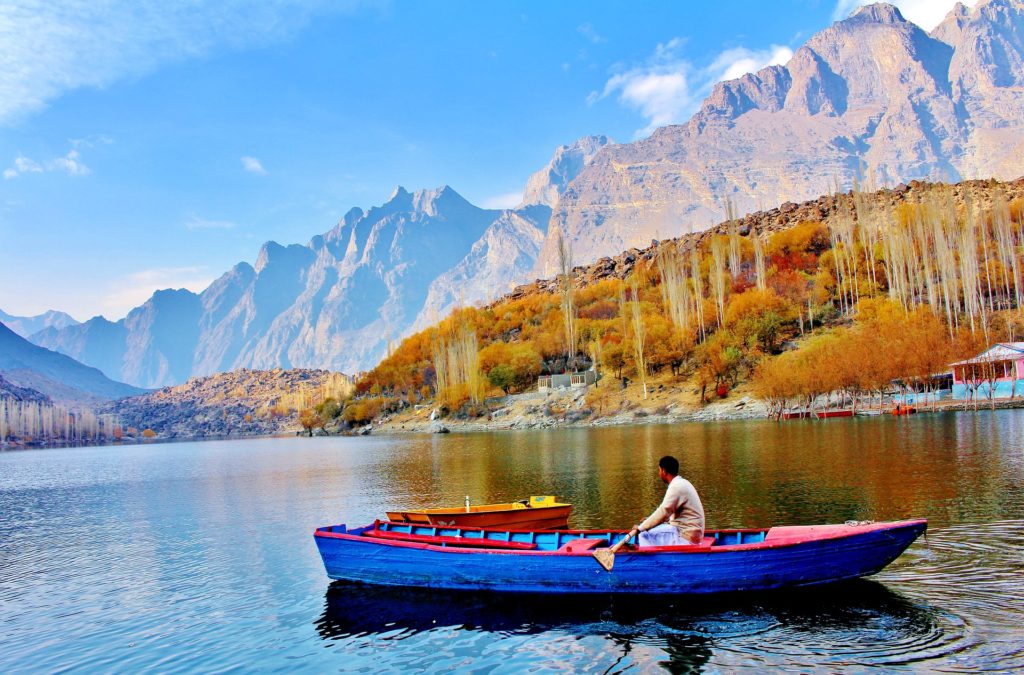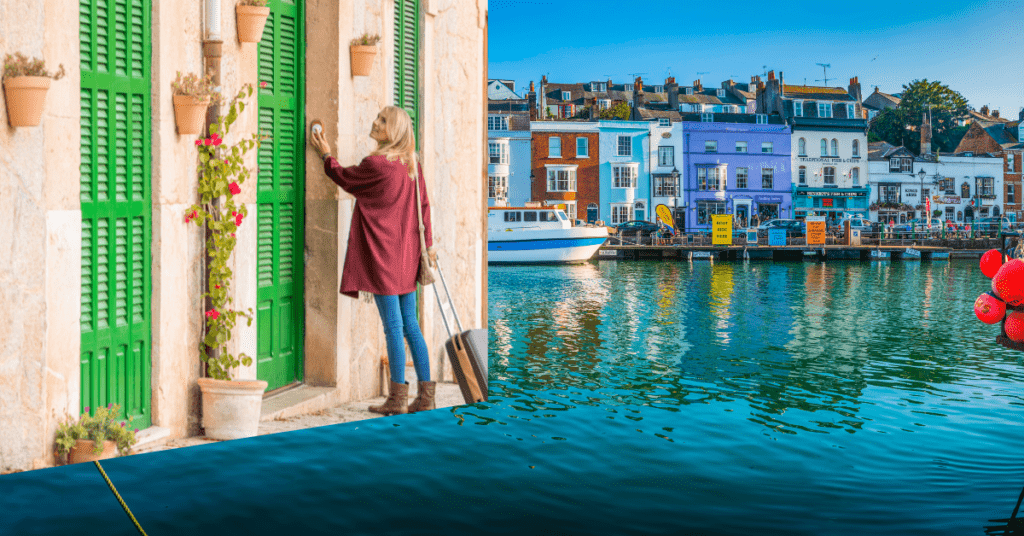There are many good reasons why in 1978 Quito Old Town was the first city to be named a UNESCO World Heritage site: the architecture, the culture, the historical treasures, and natural beauty. Situated at a literally breath-taking 2,850m above sea level, the city has undergone a major rejuvenation in recent years with more than $500m being invested in making the city a major South American tourist attraction.
There is so much to do in modern Quito, and nearby such as the TelefériQo, which has its base on the edge of the city, and the middle of the world, just a 30-minute drive away. However, Quito Old Town has enough to keep anyone engaged for a week on its own. Here is our list of the 13 best things to do in and around Quito Old Town.
Contents
1. Independence Square
Plaza Grande as it is known locally, is Quito’s main public square and one of three major plazas that can form the major landmarks as part of a gentle stroll around the old town of Quito. Independence Square is dotted with several restaurants and cafes, and we started most days with a coffee at Dulce Nieve where a sign says “Don’t leave without your FREE HUGS!.” Of course, this was January 2020, and just before COVID-19 became a global pandemic. Dulce Nieve also serves the best Locro de papa (Ecuadorian potato and cheese soup) that we tasted during our time there.
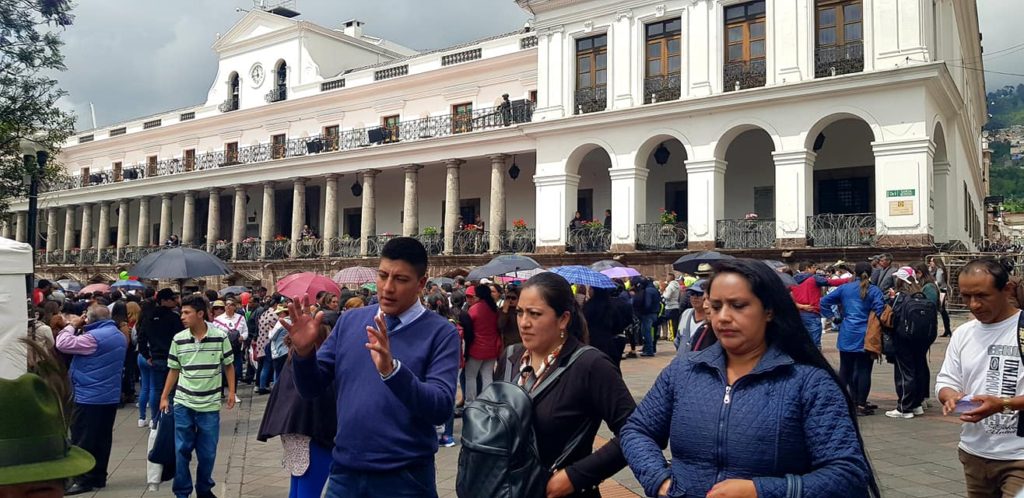
The square is a large, open space and at the centre is the Independence Monument, which commemorates the heroes who contributed towards Ecuador’s independence from Spain; it contains pleasant seating areas, shady trees, a French sculpture and fountain. The plaza is flanked by the Presidential Palace, Cathedral of Quito, the Main Municipal building, the 5 star Hotel Plaza Grande and the Archbishop’s Palace or Palacio Arzobispal.
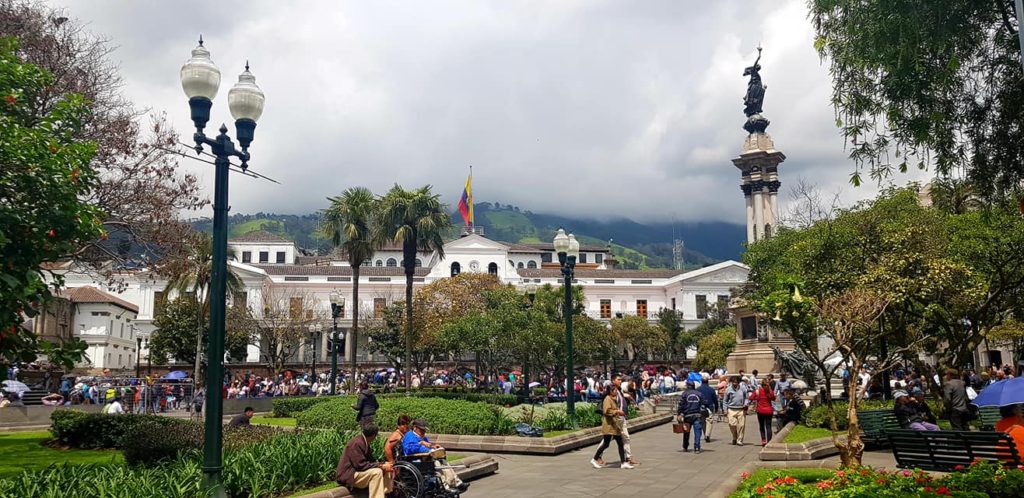
The Palacio Arzobispal is now home to a fantastic selection of restaurants and cafes. Our advice is to skip the ones that overlook the main courtyard, even though they are all very good, and head for the wonderful Pekaras Restaurante. One quick note about food in Ecuador: it may taste bland, but that is because your taste buds don’t function well at high altitudes, although they do seem to adjust, at least in part, given a little time.
2. Cathedral Metropolitana de Quito
Ecuador’s main cathedral was built in the 16th century and is made up of an eclectic mix of architectural styles, including Moorish influences, that make it unique in the city. It is located on the southwestern corner of Plaza Grande and charges a small admission fee.
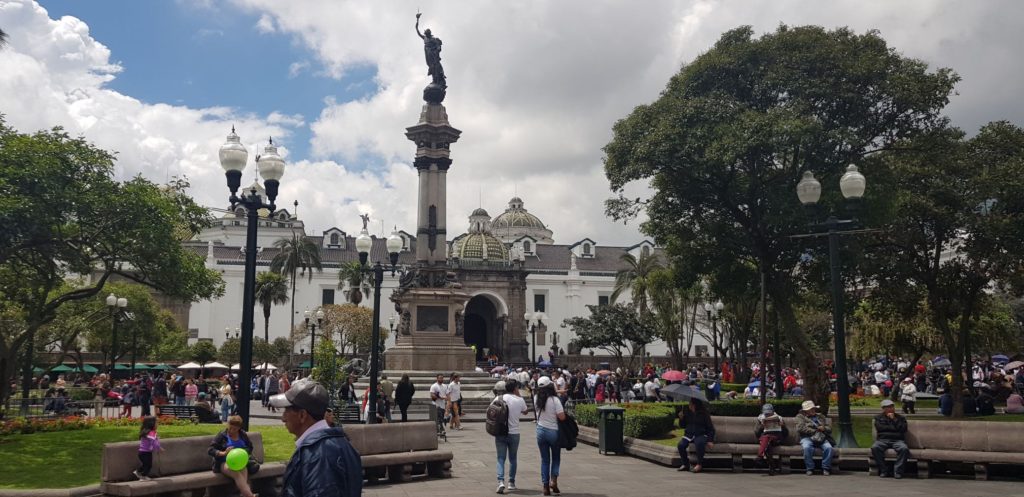
Like most churches in Quito, it contains dozens of works of art from the Quito School, with the most noticeable one being a large painting of the Assumption of the Virgin in the upper choir. The main ceiling is extraordinary; it’s made of decorative wood supported by a golden frieze and has paintings hanging from the arches. The golden altar is large and magnificent, befitting the high altar of the most senior church in the country.
The cathedral also contains the tomb of Marshal Antonio José de Sucre, who was a leading figure in South America’s fight for independence from Spain. In addition, there are remains of several other celebrated cardinals, bishops and former Ecuadorian presidents.
3. Plaza de San Francisco
Plaza de San Francisco is a 5-minute leisurely walk from Independence Square. Despite being the oldest plaza in Quito, it is probably the least impressive of the three as it is a large open, cobbled-stoned space with a single fountain offset to one side. The most notable buildings are the San Francisco religious complex, which includes the church, the monastery and Chapel of Cantuña.
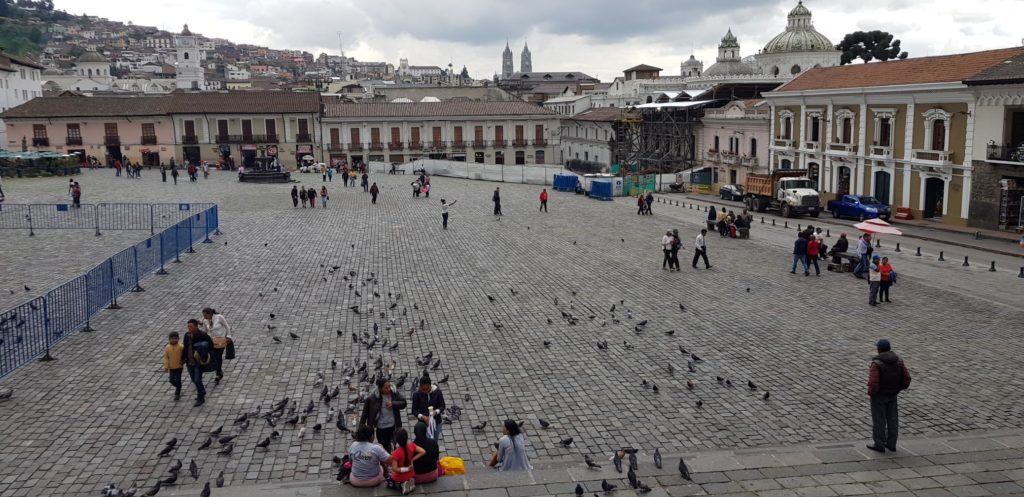
You will see many indigenous vendors around the edge of the plaza and there are several small, independent retailers selling a variety of goods, including handcrafted jewellery and genuine Panama Hats; did you know that Panama Hats actually come from Ecuador?
On Western corner is a fancy hotel called the Casa Gangotena; it was a bit too expensive for us, although the lunch specials seemed reasonable. Much more affordable is the La Hueca de Cantuña, one of several restaurants directly opposite the church. It sells fabulous coffee and delicious lunch specials.
The best time to visit the plaza is during weekends or on a holiday when it is usually transformed into something far more dynamic by festivals, special markets, or other events.
4. Iglesia y Convento de San Francisco
The Church and Convent of St Francis, dominates the Plaza de San Francisco. It is considered to be a religious complex as it comprises a church, convent, and two chapels.
The exterior of the building is quite simple, almost austere, but the interior is stunningly decorated. It also contains more than 3,500 works of art, mostly from the famous Quito School. The most notable piece is the Virgin of Quito a wooden sculpture by Bernardo de Legarda that is considered the leading light of the Quito School; it is venerated as a religious icon and there are numerous replicas in churches and chapels across the region. The attached courtyard is pristinely manicured and contains a ring of palm trees. Entrance is free, although we left a small voluntary donation.
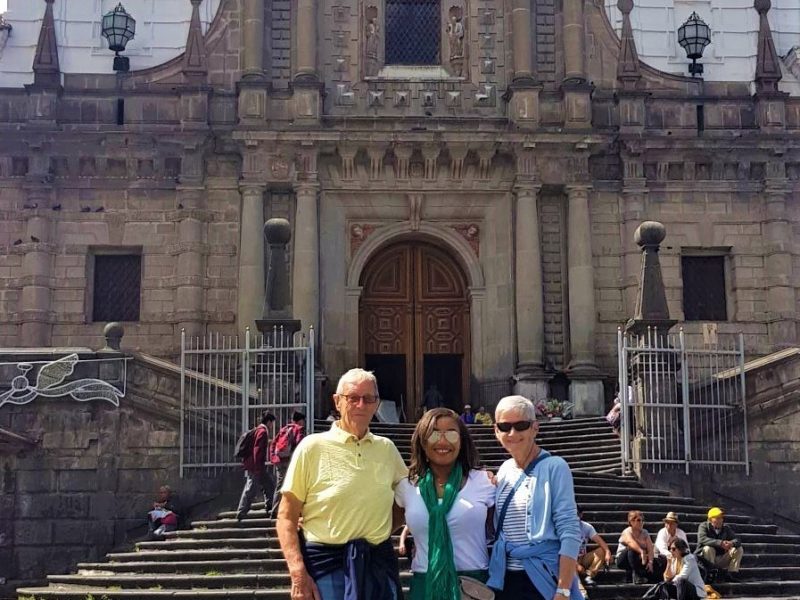
5. Plaza de Santo Domingo
The smallest of the major plazas in Quito is Plaza de Santo Domingo, which is 5-minutes’ walk from Plaza de San Francisco and about 10 minutes from Independence Square. It is often overlooked by tourists, which is a pity, as it has its own special charm, especially at night when the Iglesia de Santo Domingo, on the southeast side of the plaza, glows in floodlights. It is a great place to enjoy the best local, and some visiting, street performers, especially on weekends.
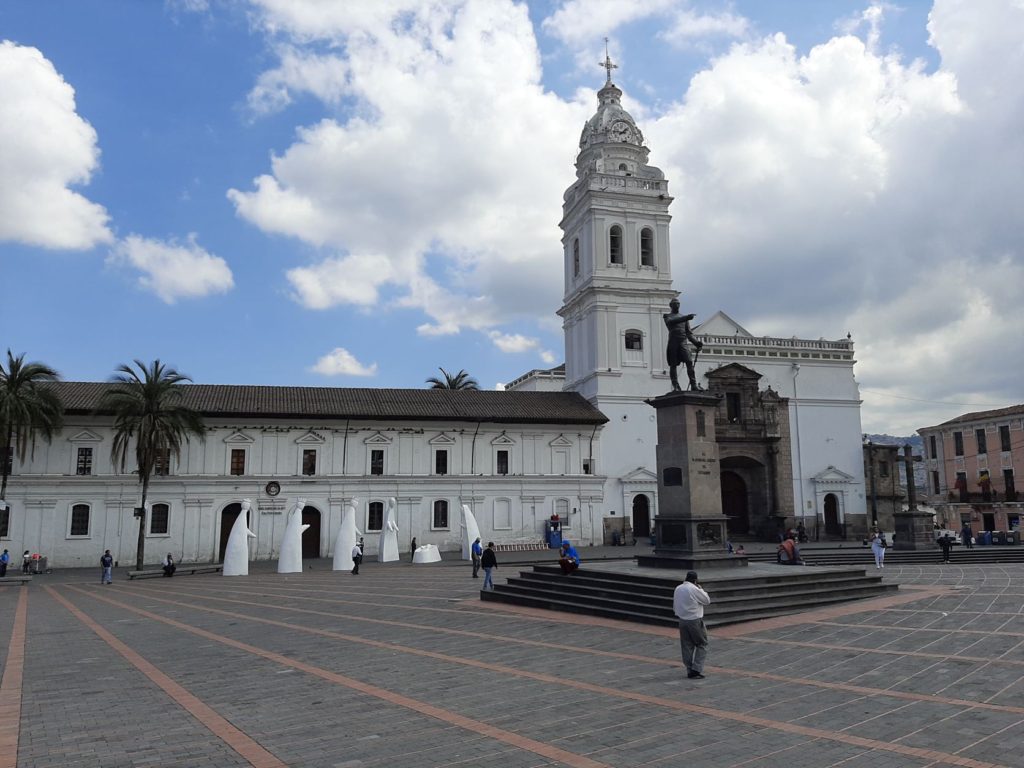
In the centre of the square is a statue of Marshal Sucre, the hero of independence and next to him are several modern statues. Don’t miss the Museo Dominicano de Arte Fray Pedro Bedón, a former Dominican Monastery that is now a highly recommended museum that is usually very quiet, even on the busiest of days.
6. Iglesia de Santo Domingo
Situated on Plaza de Santo Domingo, Santo Domingo Church probably has the prettiest exterior of all the churches in Quito. Once you are inside, check out the ten side chapels, which all differ and some are quite beautiful, especially the magnificent Chapel of the Virgen del Rosario.
The chapel has three levels: one for the laity, the second for the priests and officials and the third, which is reserved for a sculpture of the Virgin of the Rosary. There is also a small museum, and you can wander around the cloister’s quiet gardens and some of the rooms in the priory.
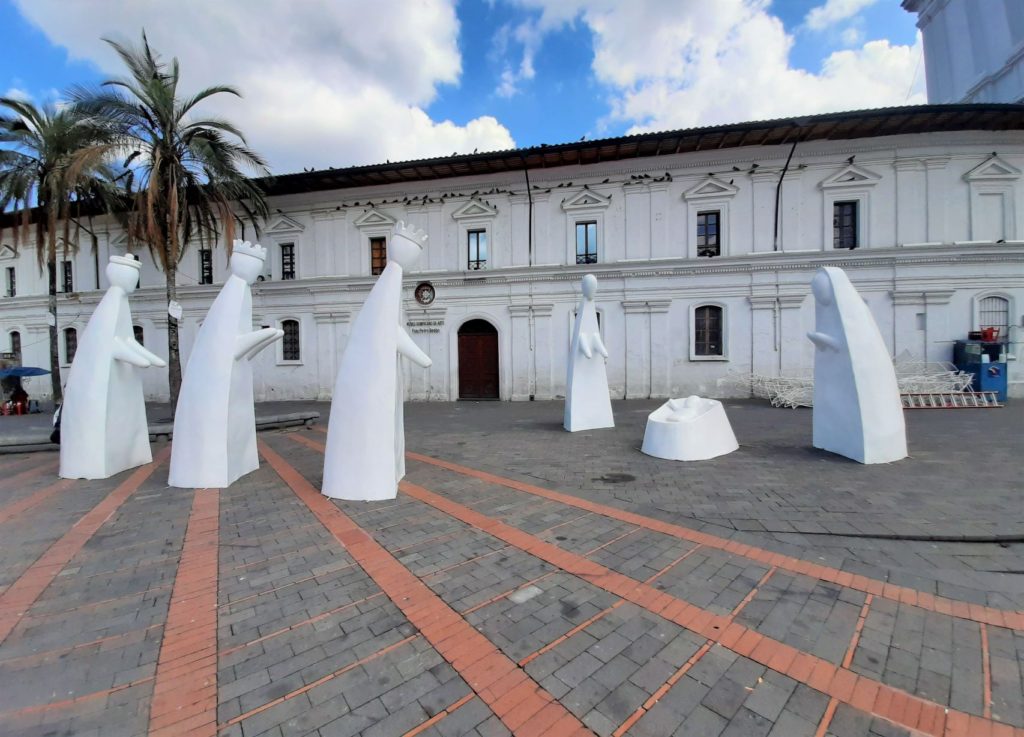
7. Museo de la Ciudad
The City Museum is located in a 16th century hospital building. It is small and packed with displays that show a fascinating history of pre-colonial Ecuador and the Incas. It doesn’t “sugar-coat” or gloss over the conflict between the indigenous people and colonializes, and even shows conquistadores killing native people.
The building is beautiful, and don’t forget to look downwards at the amazing floors. There is a lovely courtyard and a rooftop garden which is beautifully peaceful and offers seating with great views of the city and the mountains. There is a small entry fee and the museum is a fabulous way to spend a couple of entertaining and educational hours.
The museum has an informative website: http://www.museociudadquito.gob.ec/
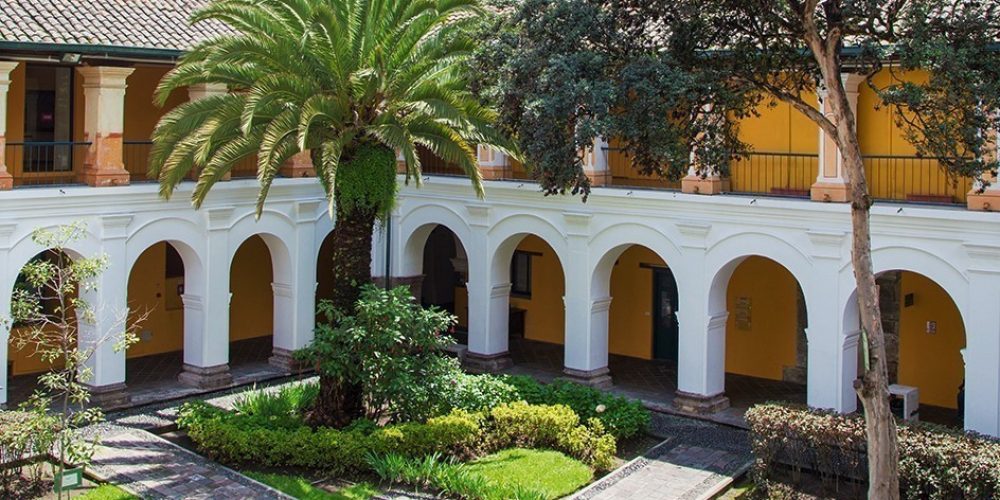
8. La Iglesia de la Compañía de Jesús
If you only visit one church it has to be the Jesuit church known colloquially as la Compañía. It is by some margin the most ornate church in Quito decorated with huge amounts of gold leaf, gilded plaster, and wood carvings. It is topped off by two green and gold domes on the vaulted ceiling.
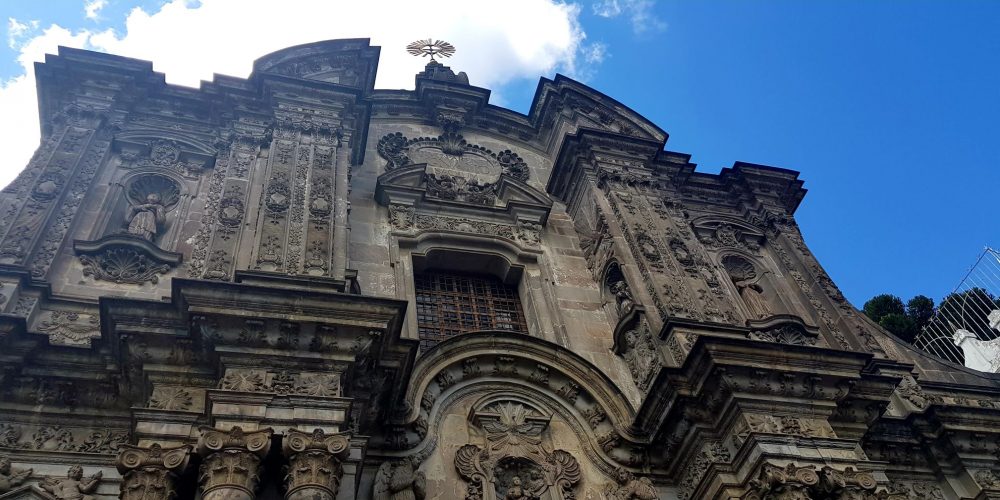
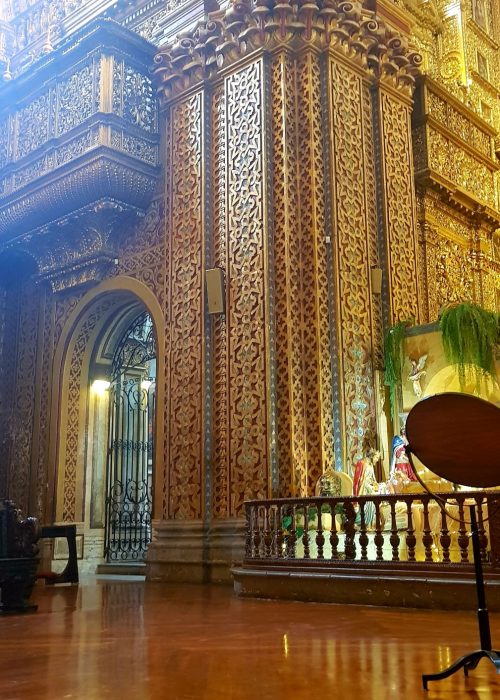
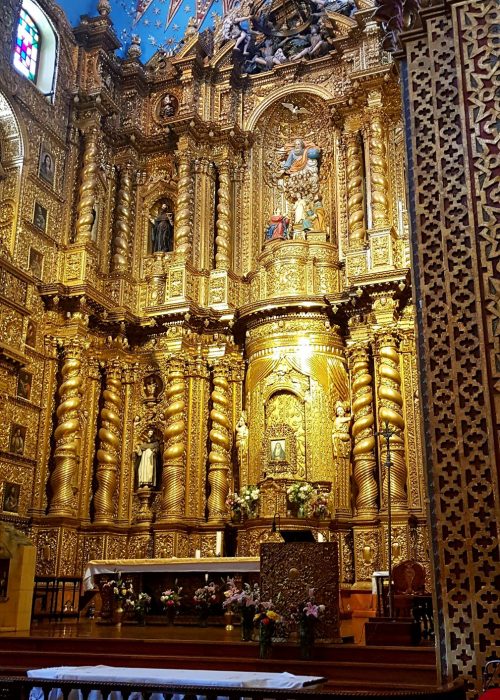
It also functions as a fabulous art gallery with 56 sculptures and 44 paintings, the most famous of which is Nicolás Javier de Goríbar‘s 16 Prophets. The paintings showing Hell and the Final Judgement on either side of the door are striking, as are Holy Trinity sculptures by Bernardo de Legarda one of the most important artists of the Quito School. We paid a $5 entrance fee each, which was totally worth it, but if you are lucky enough to be there on the first Sunday of any month, admission is free.
9. Calle La Ronda
Calle La Ronda is a cute and fairly long pedestrianized street lined with restaurants, cafes, bar and shops that are aimed predominately at tourists.
The cobble-stoned street is narrow, colourful and picture postcard pretty. It is generally fairly quiet during the day and comes to life after dark with many of the bars having live music with patrons spilling out onto the street. It’s a great place to try some canelazo, a hot, cider-like alcoholic drink that is both sweet and spicy.
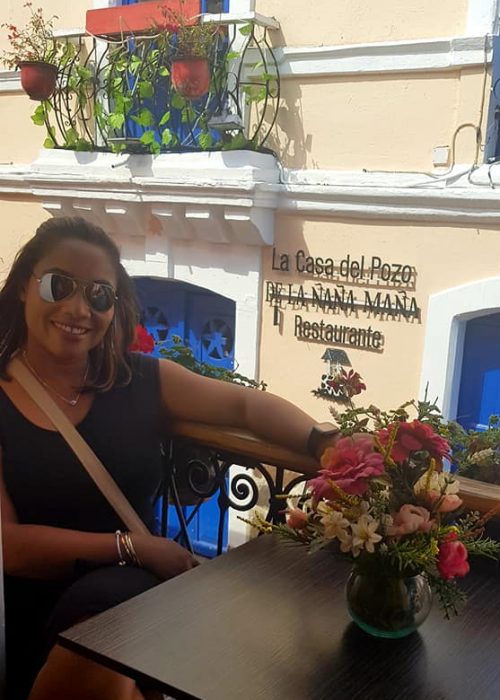
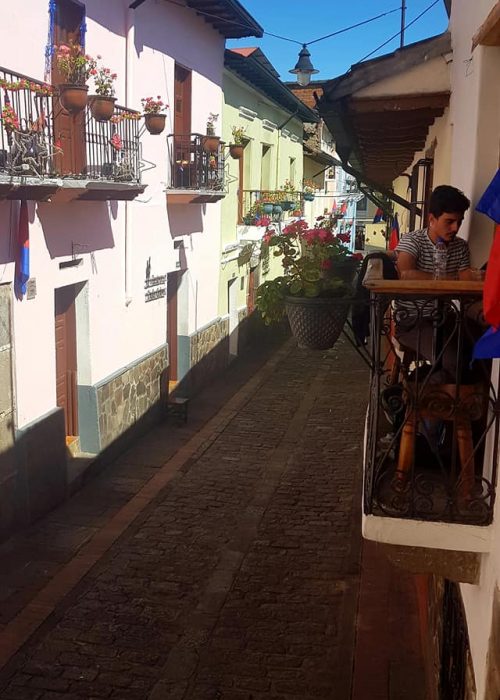
10. Observatorio Astronomico de Quito
The Quito Astronomical Observatory is the second oldest observatory in South America having been founded in 1873. One of the more unusual attraction in the old town, it makes a nice change from the colonial splendour you’ll experience elsewhere. It’s a 15-minute walk from Independence square, largely uphill, so possibly not technically in the historic old town.
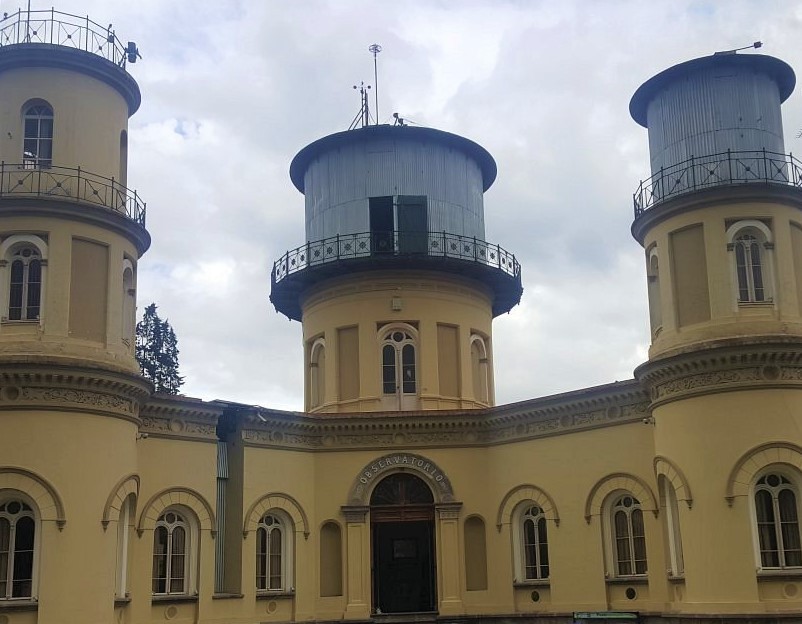
The observatory continues to conduct scientific research and is now part of the Escuela Politécnica Nacional (National Polytechnic School). The museum offers an interesting section of historical and modern astronomical equipment such as telescopes and seismographs. The highlight is the original 19th century telescope on the roof, from where you also get fabulous views of the city and countryside.
11. Basílica del Voto Nacional
As you head back to the centre of Quito Old Town from the observatory, take a slight detour and visit the Basílica del Voto Nacional (Cathedral of the National Vow), the largest church in Quito. Built in the late 19th century, it is not as ornate as the churches in the core of the historic district, but its sheer size is impressive.
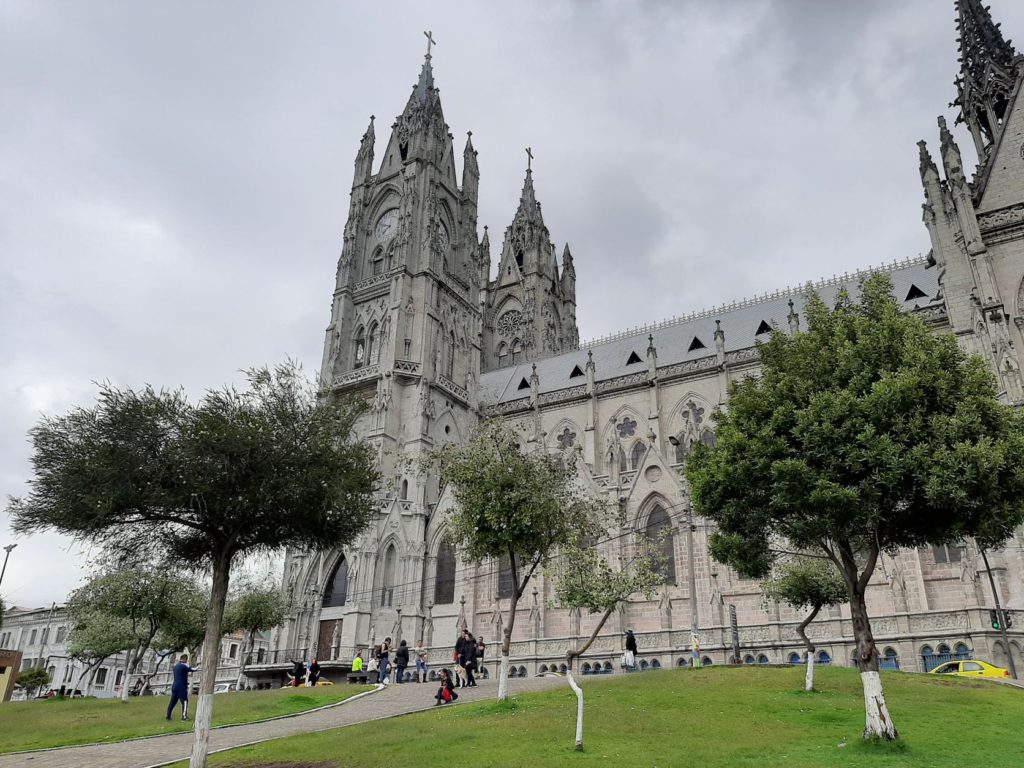
If you are reasonably fit, we recommend paying the small fee to climb the tower for the most amazing views of Quito, although you might want to give yourself a couple of days to acclimatize to the altitude first before trying it.
By the way, construction of the Basílica has not officially been completed, because local legend says that when it is finished, the world will come to an end!
12. El Panecillo
For the best views of Quito climb the steep stairway to El Panecillo; better still, take a bus or taxi as it’s a tough ascent at 3,000m above sea level. The hill is so named because of its supposed resemblance to a loaf of bread.
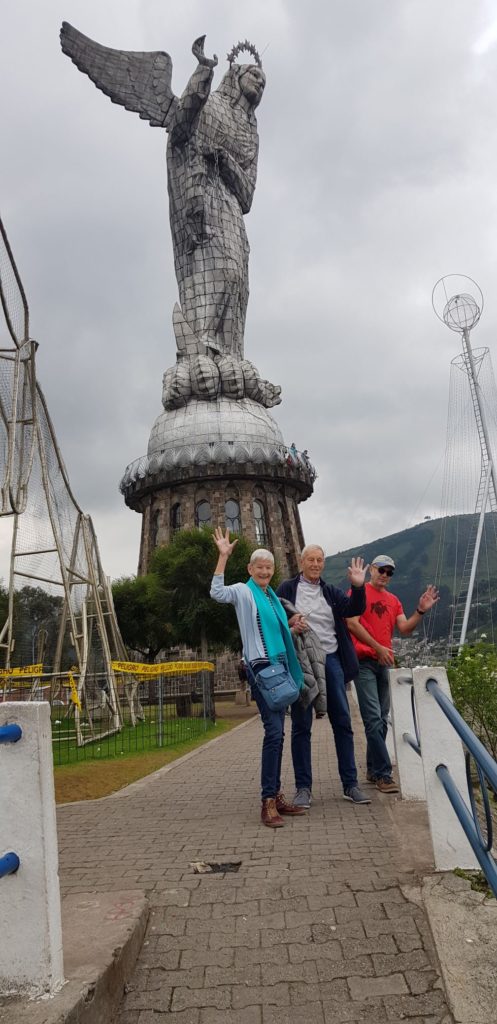
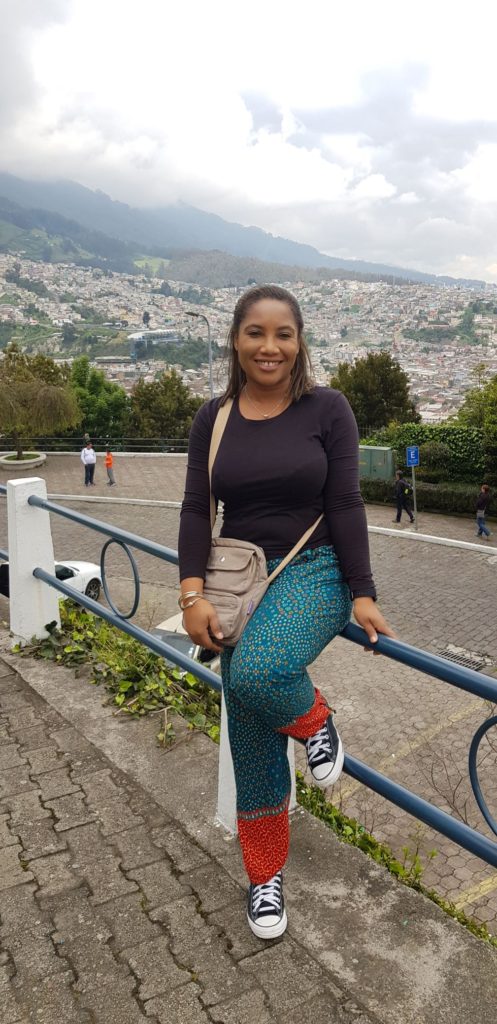
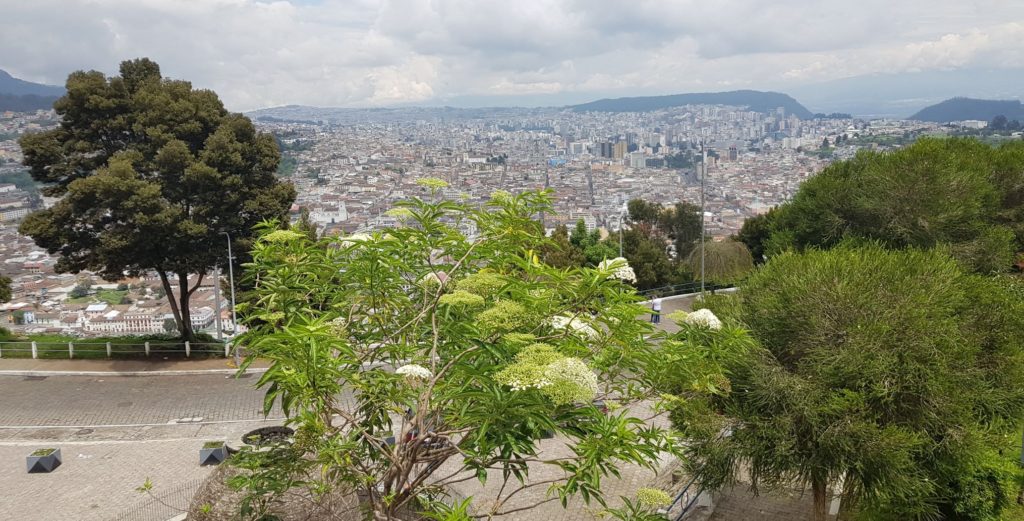
The centrepiece is the 3m metre statue of the Virgin Mary, which is based on Bernardo de Legarda’s Virin of Quito and was constructed in 1976 from more than 7,000 sheets of aluminium. There is also a small, and frankly forgettable, museum in the base of the statue. Of course, what most people come for is the stunning views from the three viewing platforms, each of which, is slightly better than the one below it.
13. Mercado Central
The Quito central market is a pleasant 10-minute walk from Independence Square, and definitely worth it. We love the vibe in local markets, and Mercado Central in Quito is one of the very best we’ve experienced.
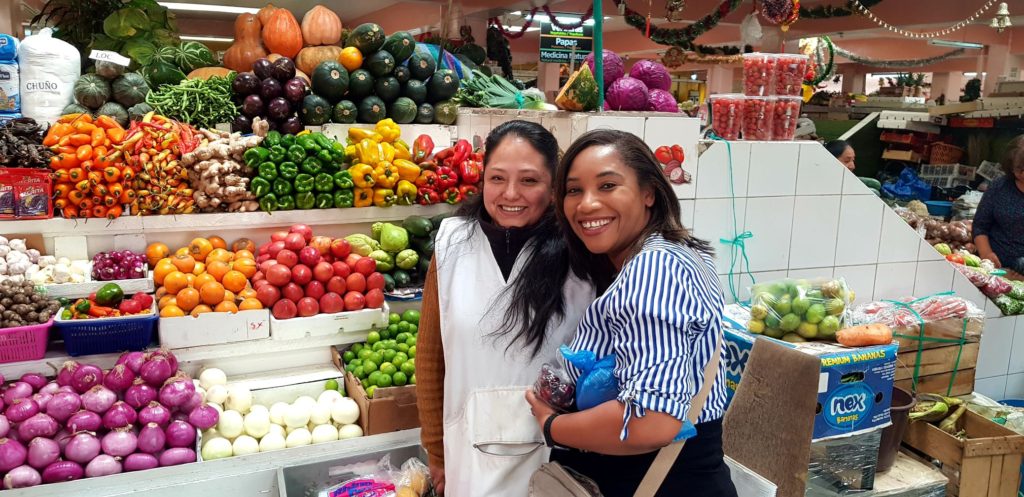
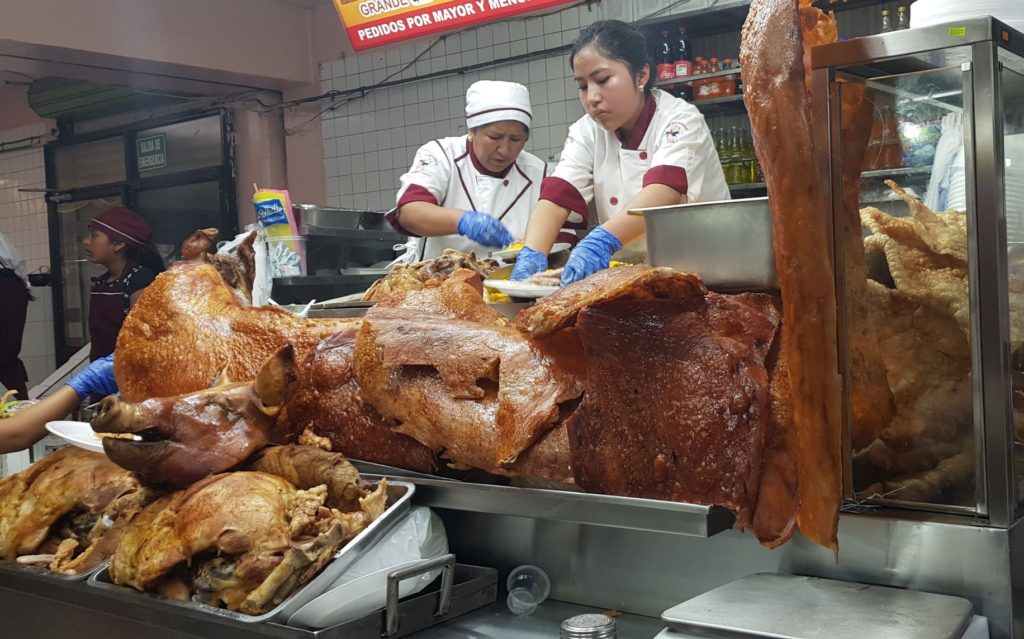
The range, quality and colours of produce are simply staggering, some of which were new to us. The meat section was eye-opening too and,of, course, the flowers were exquisite. The vendors are friendly and welcoming, probably because tourists are a rarity there. There are dozens of food stalls serving cheap, delicious local food; if you are travelling on a tight budget, it’s a great place to get your main meal every day.
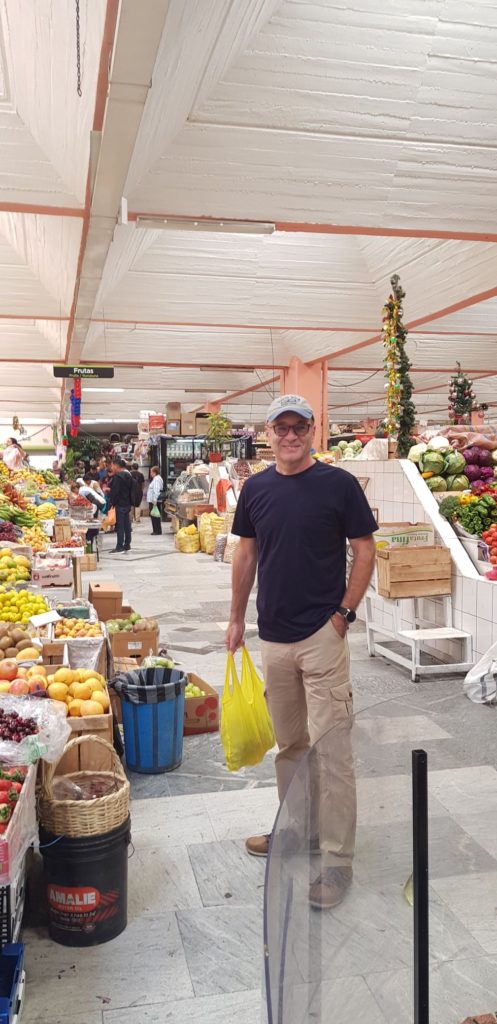
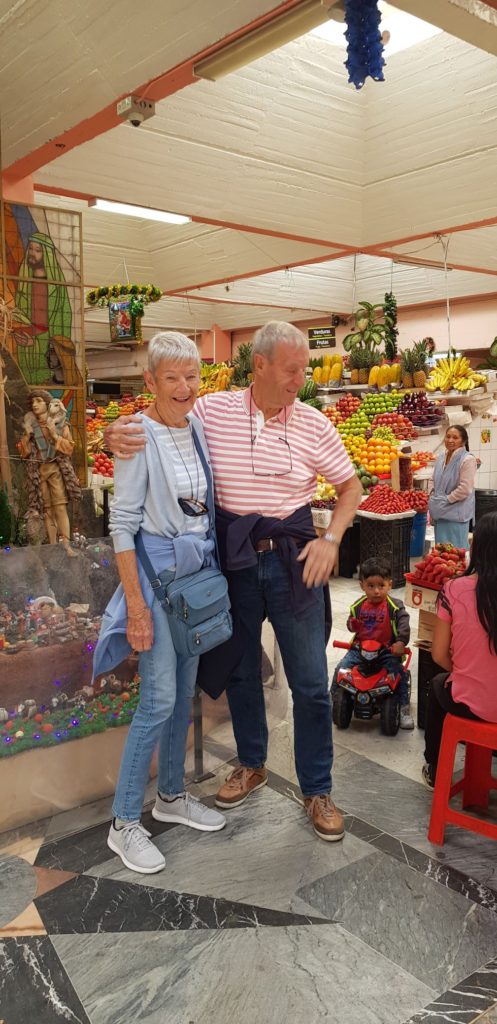
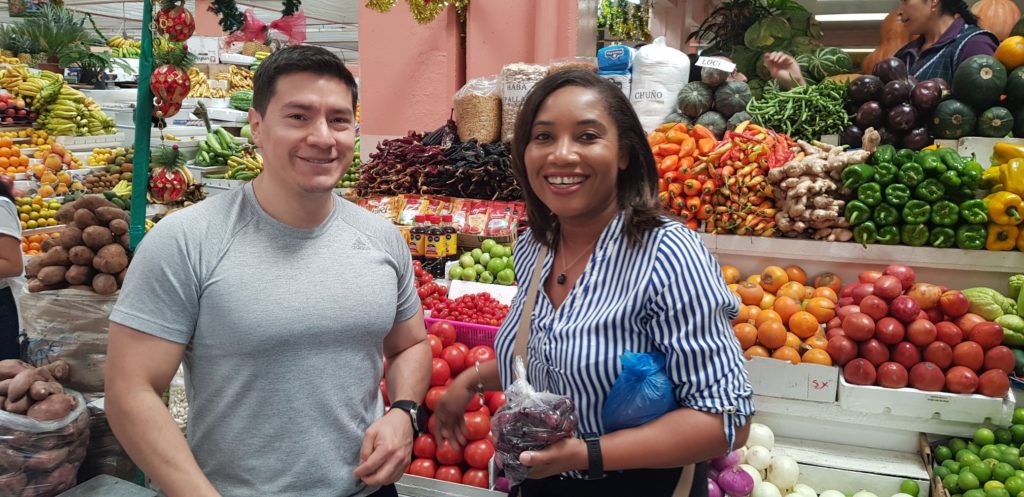
Ecuador is an amazing country with so much to do, including around the Greater Quito area. Of these, the historic Quito Old Town is a star and definitely worth at least 3 days of your time, probably more if you can afford it.
What did you think of this article on Old Town, Quito, did I miss anything you needed to know? Let me know below in the comments.
Photography by Nick & Monique Abbott
Author
Nick Abbott
Hi, I’m Nick. Visiting foreign countries has been an important part of my life since my parents moved to Kano in Nigeria in 1977. Since then, as both a military officer and in later jobs I have enjoyed the huge privilege of being exposed to many different countries and cultures.
I am delighted to be able to support my wife Monique and Yes2Yolo primarily by contributing travel articles, providing editing and proof-reading services and being a general sounding board.
